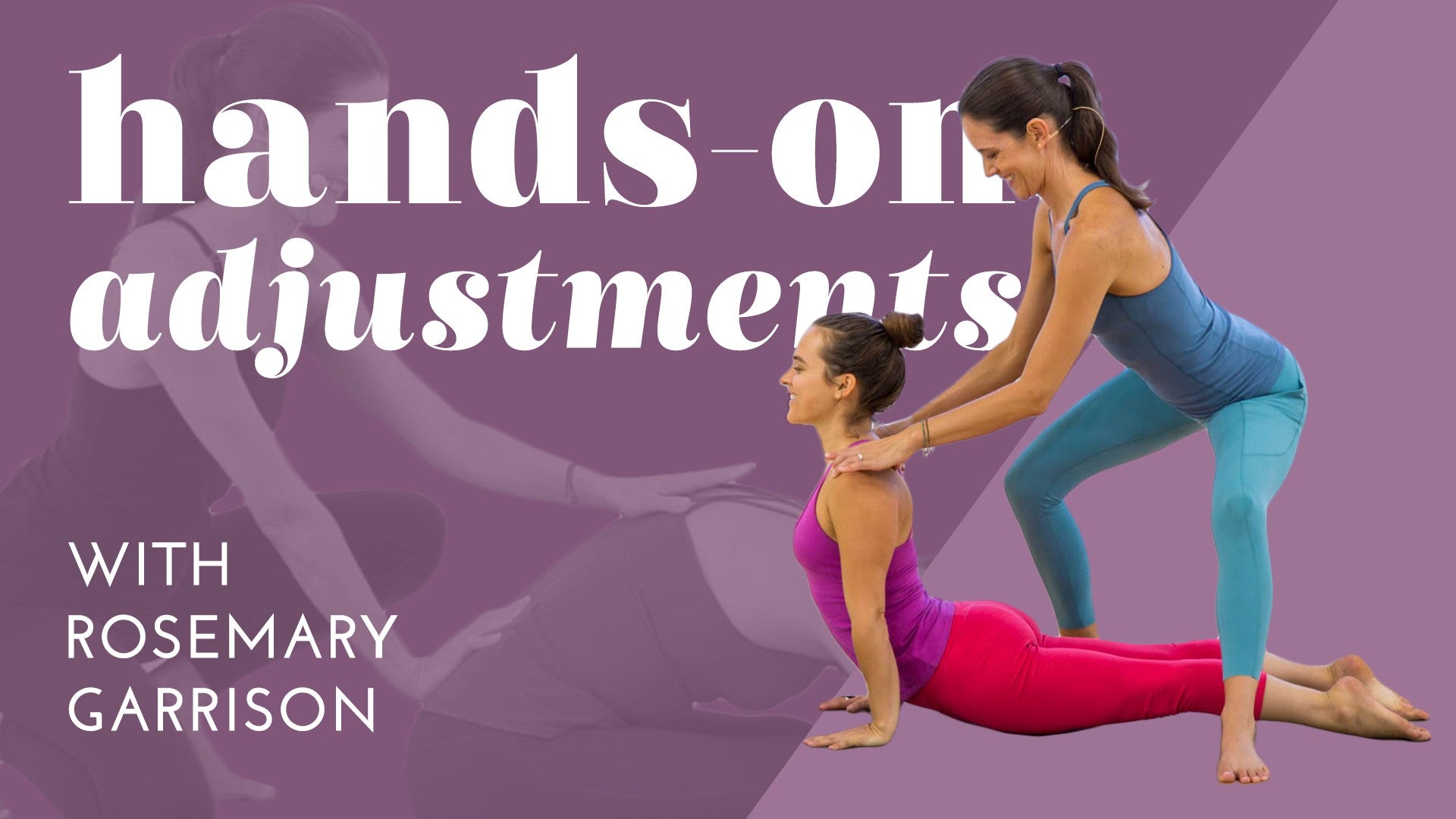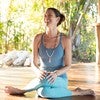Description
About This Video
Transcript
Read Full Transcript
All right, so, Chaturanga Dhanasana. We are starting seated so that I can demonstrate a handful of things before Alana moves into the entire pose, okay? So Alana, take your arms out actually like you're in plank, right? So when we're in plank pose, we have this incredibly long spine, neck in line with the spine, energy out through the crown of the head, shoulders back and down, right? When we move into Chaturanga, all of that stays intact, the arms draw down, okay?
Then when we're in the full pose, we want the upper arms in line with the torso. The forearms essentially at a 90 degree angle with the upper arms, there can be a slight lift of the forearms depending on your physical proportions, but essentially a 90 degree angle here. What we do not want is the elbows to come back farther than the torso, that's going to put a lot of strain on the elbow and shoulder joints over time. So elbows back in line with torso, we make sure that we don't lower the upper body too low. The other thing that we're looking for as we lower is this integrity of alignment through the upper back shoulders.
So Alana, would you do the opposite, the rolling forward, exactly? Often when we lower from plank to Chaturanga, there's this scrunching of the neck and a rolling forward collapsing of the shoulders, again, not great for the joints over time. So we want to keep them rolling back and down, nice. Just like the shoulders staying intact, the neck stays long, would you drop your head for me for a moment, okay? Often as the upper body lowers, there's this temptation to let the head lower as well.
We do not want that, neck stays in line with the spine, so drop back up, all right? So one more time, just a little visual review, take the arms straight out like plank, see this line of energy crown all the way down through the torso and then just draw the arms back, yeah? So beautiful. All right, now we're going to see the transition from plank to Chaturanga. As you're ready, big inhale, watching the spine, exhale lowering down, beautiful, and then just release, all right?
Good, you can rest for a moment and when you're ready, just come back to the knees, all right? The other area that we're looking at is the core of the body down through the hips, legs, feet, right? Just like Cobra, an up dog, there can be a temptation to let the lower belly kind of drop, splay, collapsing into the low back. Do not want that. We want a strong center, yeah, beautiful, and we want to keep that strength as the body lowers down.
It's kind of amazing, in fact, when you really engage the belly through that transition, it makes the body feel a little lighter, a little more buoyant, and it helps the downward movement from plank to Chaturanga. So this time, as Alana moves through, keep your eyes around her core and the strength in her legs. Plank pose, keeping that lift through the center, inhale, and then exhale lower, gorgeous. And then go ahead and just release. Thank you.
And you can rest wherever you're most comfortable. All right, so just as a review, I don't do hands-on adjustments with Chaturanga. It's mostly a verbal cue and sometimes a slow, mindful breakdown of the different bullet points. I do want to emphasize how important it is to take this time often in classes because it's a challenging pose. It's a very rapid transition, and it's very easy to move things out of alignment, which may not show up as problematic in the body for a long time, but if we keep doing it incorrectly, it will create an amazing strain on the wrists, the elbows, the shoulders, the neck.
So we want to make sure that it's clean, aligned, mindful. Take the time to do that for yourself and for your students. Thank you so much, and thank you, Alana.
Hands On Adjustments: The Postures of Sun Salutations
Comments
You need to be a subscriber to post a comment.
Please Log In or Create an Account to start your free trial.
















